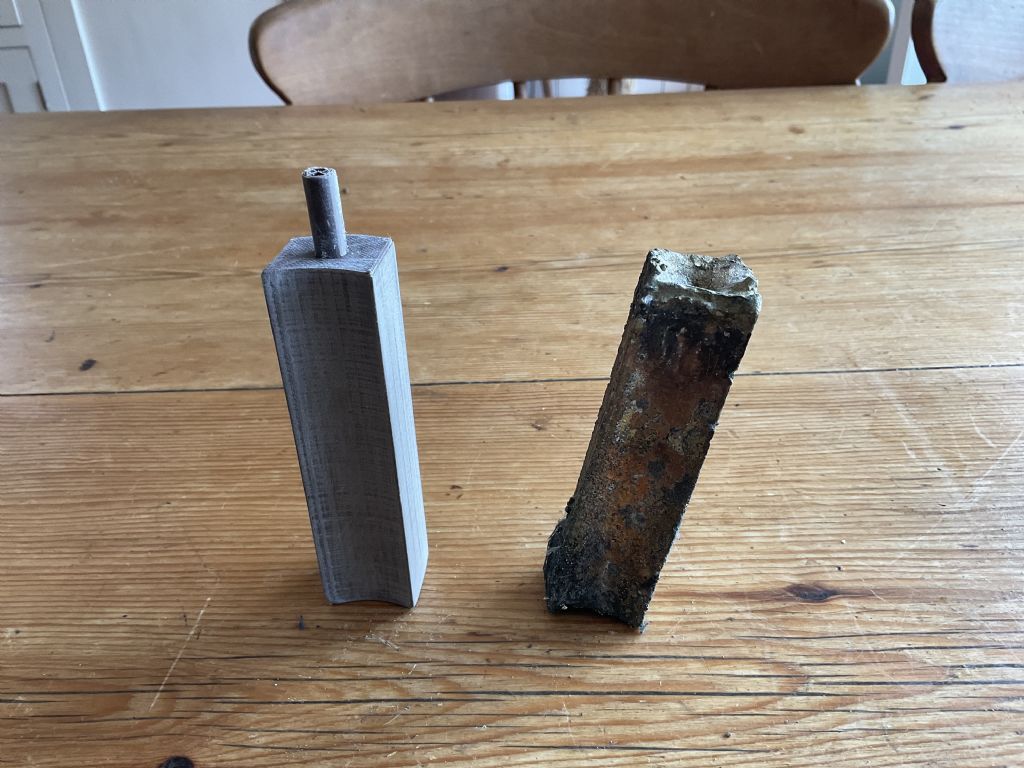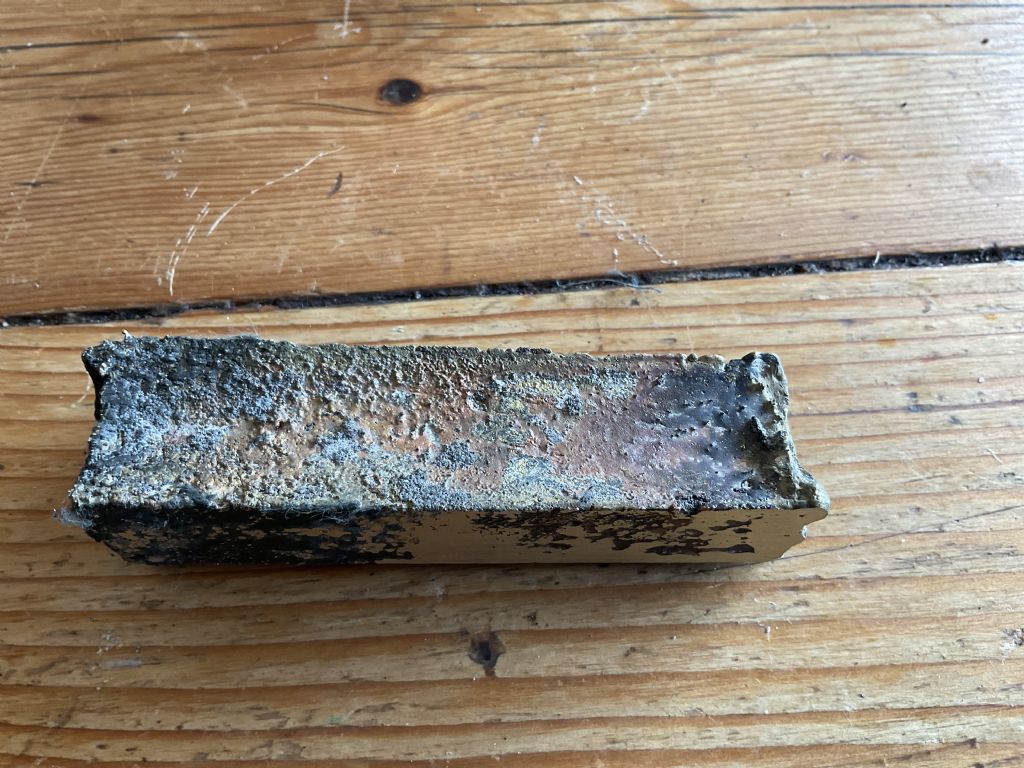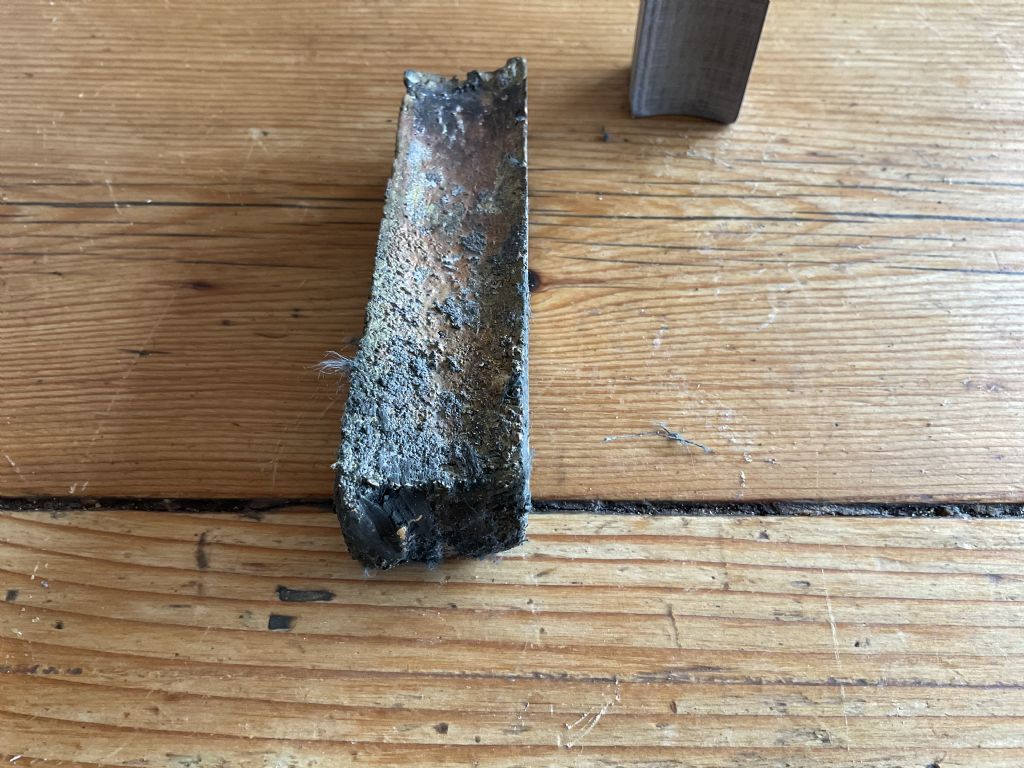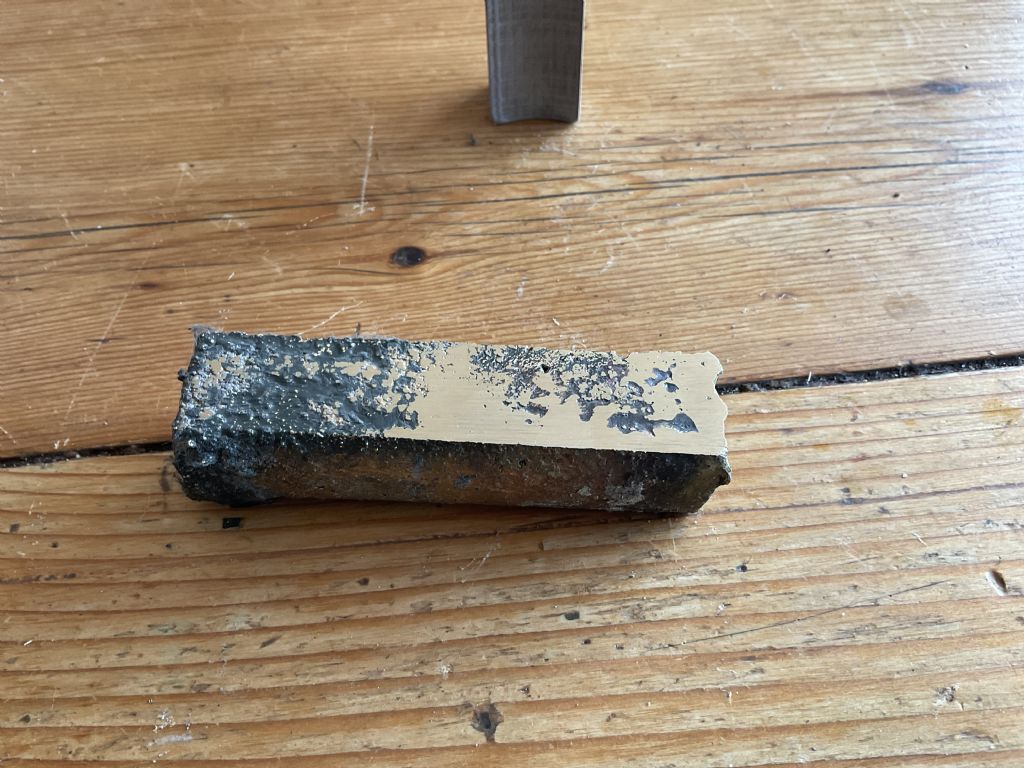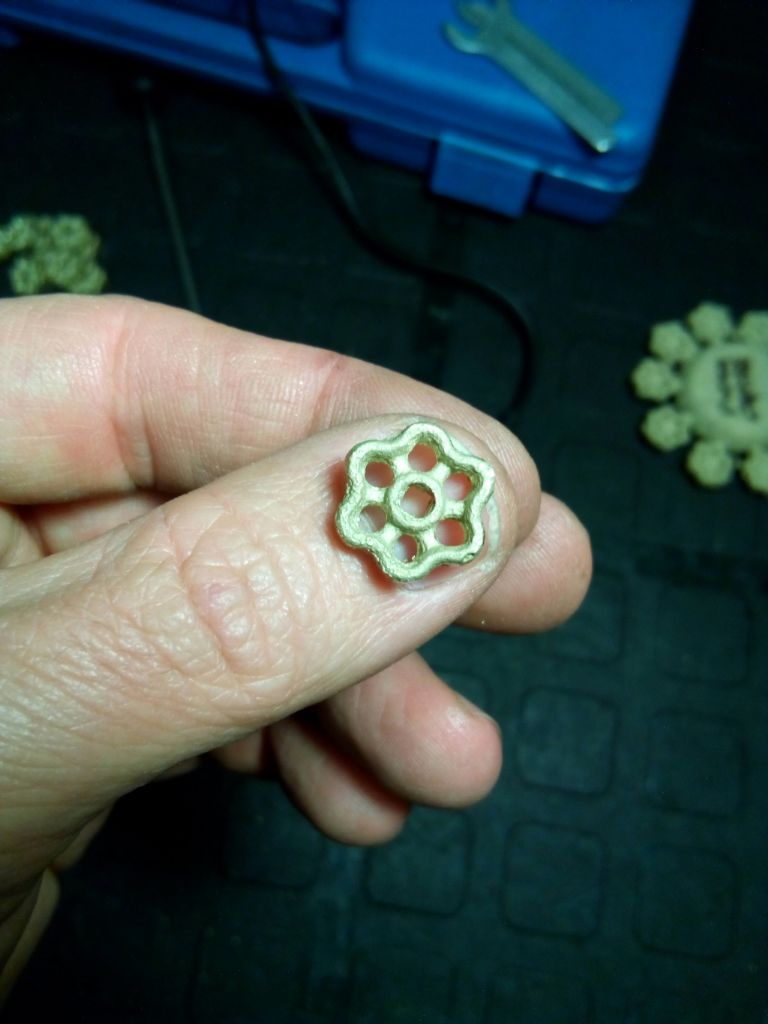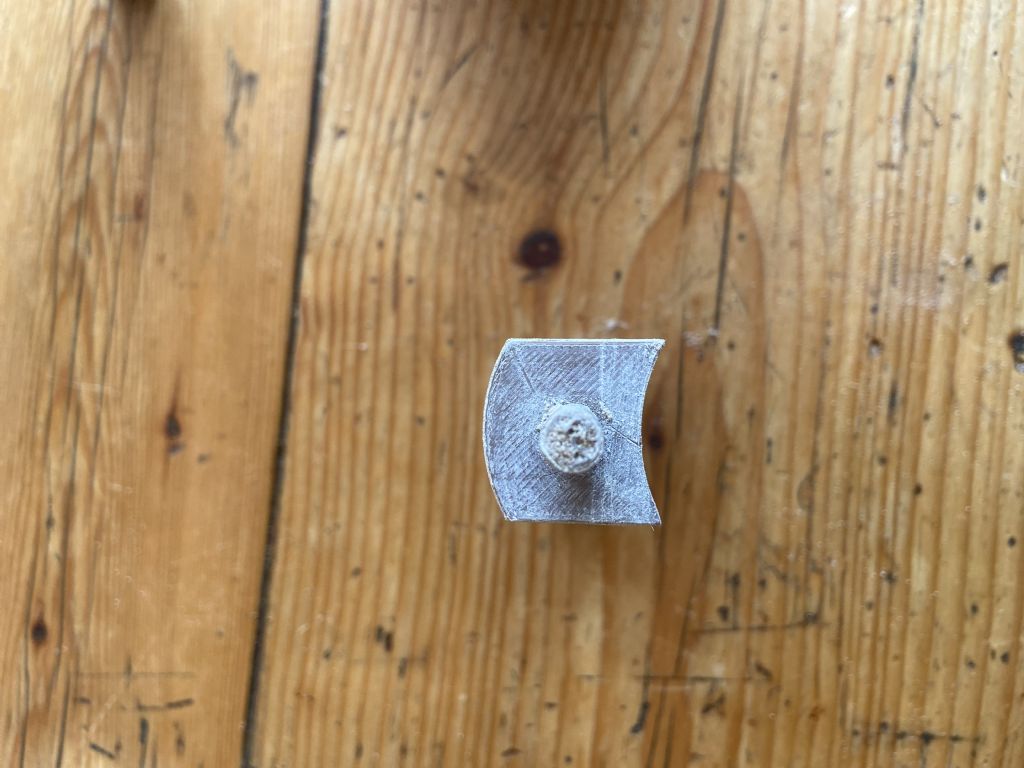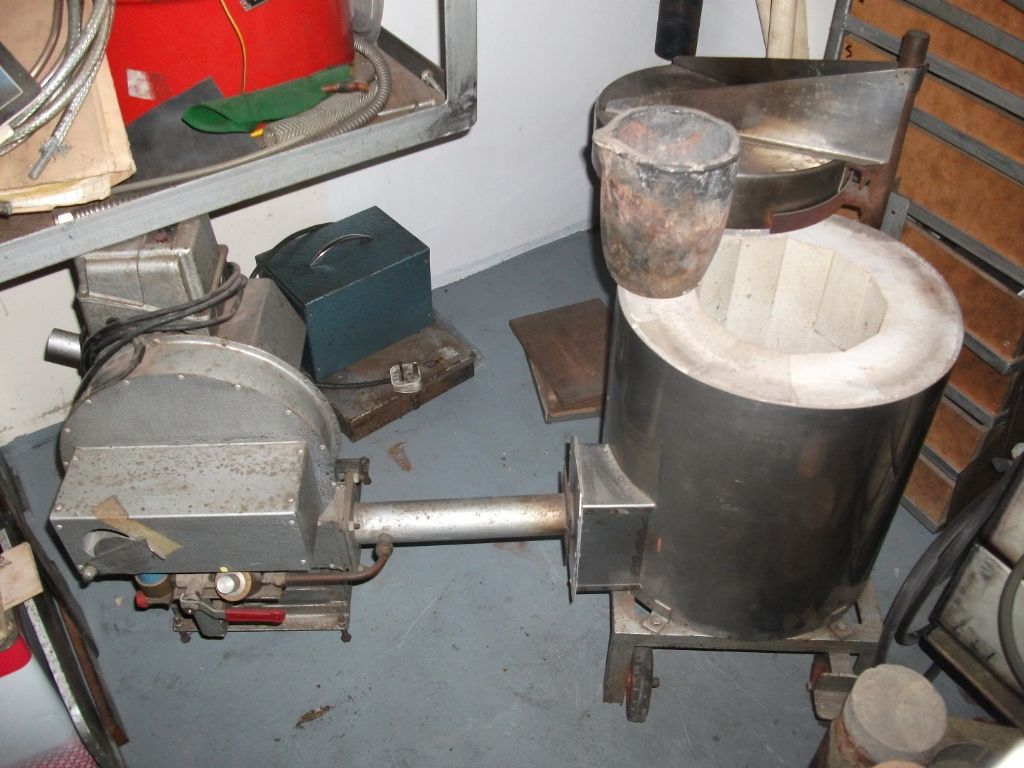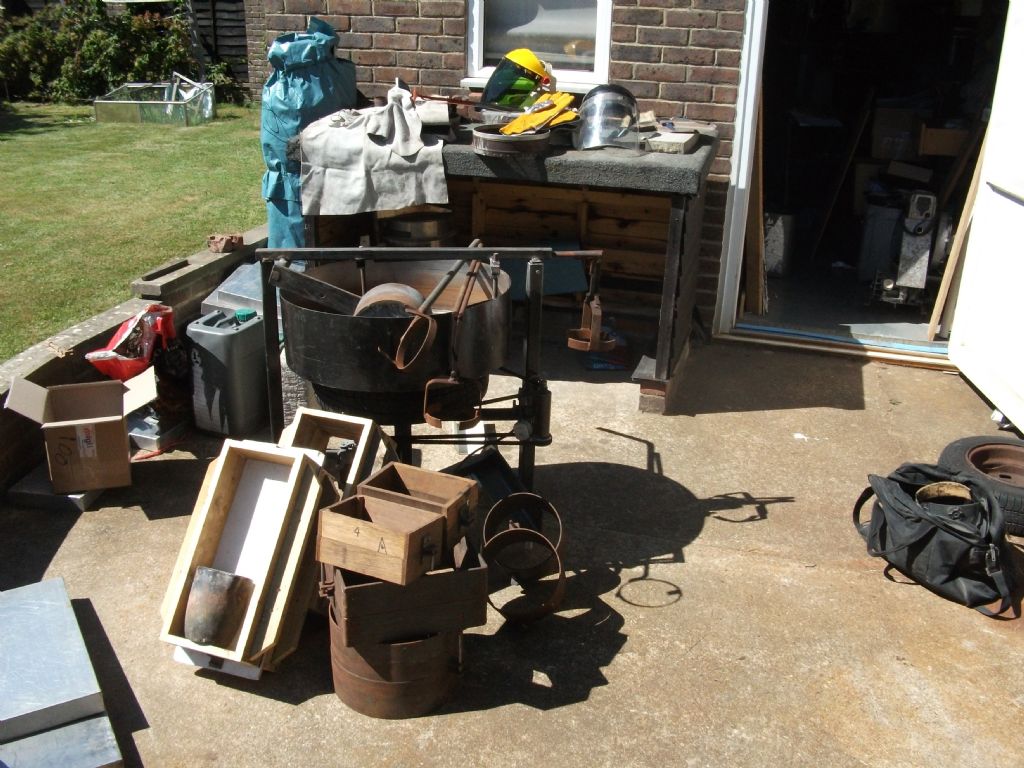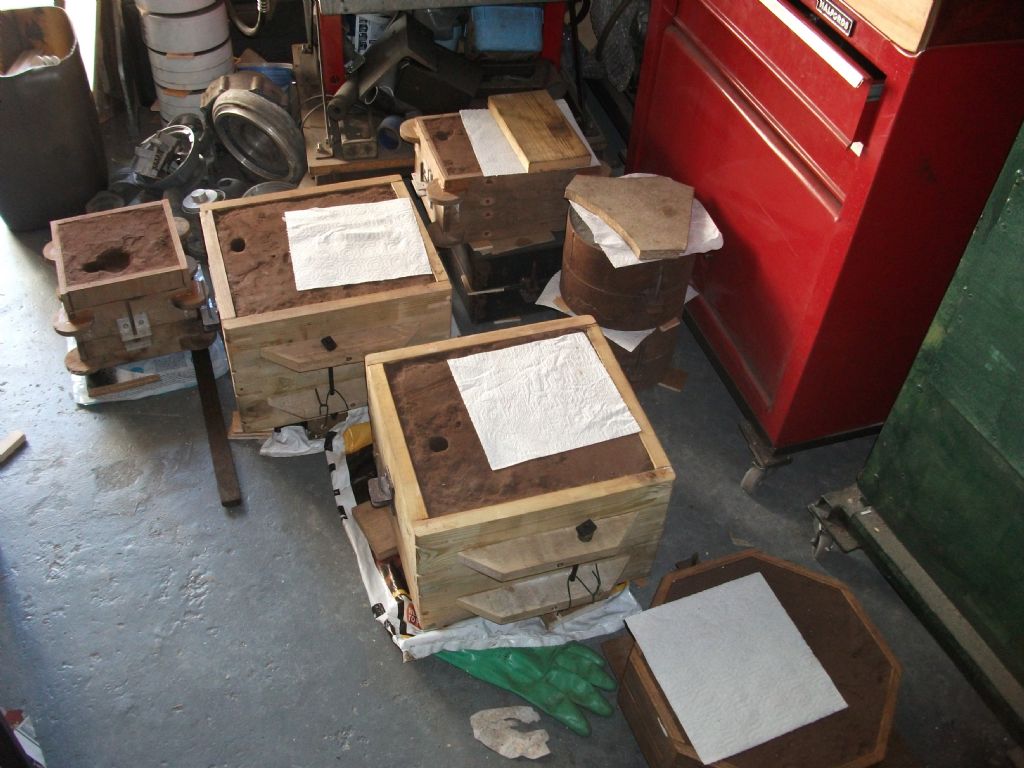Posted by Steve355 02/07/2022 09:54:21
Morning
Is there anyone out there who has advice for a total beginner at sand casting?
I made a waste oil burner and furnace, after a lot of tinkering it’s working pretty well and can
get up to 1100 deg C or so without too much trouble.
My first project is to make some brass sanding blocks for making woodwork moulding planes.
I made a pattern on a 3d printer. I used play sand (fine and consistent) and about 10% fireclay
as DIY greensand.
I used a cast iron flask, packed down the pattern in the sand vertically and removed it carefully.
I melted down the brass and poured it in. The result was, well, roughly the right shape, but it had
a big nodule on the bottom (presumably caused by the pouring brass) and a terrible pitted finish.
of course I can sand out some of the pitting, but that’s not the point.
Does anyone with experience have any tips? See pics. Yes it’s terrible, I know.
Steve
—————————————————————
I started casting around 1984 ,i was at a Model engineer show and one of the stands
was selling crucibles along with give away leaflet , i bought one i think it was about tenner.
That was about as much as i knew about casting,back then there was no internet and
there was no one that i knew of that had done any casting,first problem no sand, i had a ring
around after looking through the Yellow pages most of these were industrial type suppliers
and came with the warning of the usual that's too dangerous you'll end up killing yourself
(much the same as you often see on this forum), we only supply 20 tons at a time.
I phoned around some local foundry's and they were most helpful ,bring some buckets
and you can have some ,i still have the same 2 dustbins full of sand now.
My first castings were done using an old tin oil drum full of coke and an old cylinder
vacuum cleaner to provide a draught, some of the early castings were nothing more than
useful blobs of metal but you learn as you go along.
Eventually i got fed up with the tin can and coke furnace and built this modified Dave
Gingery furnace (in about 1989) supposedly will melt 20 lb of cast iron in 45 min i don't know if it will
I've never tried it with iron , an A8 crucible will fit inside.
(First Photo)

The thing is when you have done some of this you tend to forget how much equipment
that you have accumulated over time, the furnace the crucible some sand and then all of the other
stuff that you need lifting and pouring rings , moulding boxes, patterns and some
decent safety equipment and so it goes on ,it all adds up to some expense in both
money and time.

The 2nd photo here shows some of this stuff in the foreground some moulding boxes,
crucible , lifting tongs, pouring rings , behind , a copy of Luckygen's sand muller a recent
addition ,at the back leather aprons leggings face shields and gloves.
I don't do much foundry work the last time was about 15 years ago but in the next week
or so its getting fired up again if the weather stays fine. 3rd photo.

It should be much easier than when i started as there is so much stuff available now and
useful advice , there's Luker, Pat J, and Noel Shelly ,worth looking at the videos
from Luckygen ,Old foundry man and Myfordboy they will all have something that
will be of use to you.
You just have to stick with it ,work carefully follow some of the advice and watch some
of the videos .
John
Steve355.


